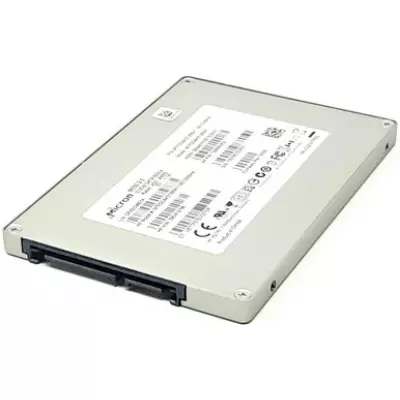Micron MTFDJAL1T6MBS 1.6TB SAS 12Gb/s 2.5" SFF MLC SSD

Shipping $99+
$214.00 $220.00
Micron MTFDJAL1T6MBS Product Specs
| Brand | Micron |
| Capacity | 1.6TB |
| Spindle Speed | 10K |
| Interface Type | SAS |
| Data Transfer Rate | 12Gb/s |
| Encryption | Self Encrypting Drive (SED) |
| NAND Flash Memory Type | Multi-Level Cell (MLC) |
| Form Factor | 2.5" SFF |
Micron MTFDJAL1T6MBS Description
The Micron MTFDJAL1T6MBS 1.6TB SAS 12Gb/s 2.5" SFF MLC SSD is a high-performance solid-state drive designed for enterprise storage solutions. Ideal for data centers, servers, and high-demand computing environments, this SSD delivers fast and reliable storage with a 12Gb/s SAS interface, ensuring compatibility with a wide range of server models that support 2.5" SAS drives. Its 1.6TB capacity offers ample space for critical applications and databases, making it perfect for businesses requiring both speed and durability.
Key specifications of this Micron SSD highlight its advanced technology and robust design:
- Brand: Micron, a trusted name in memory and storage solutions
- Capacity: 1.6TB, providing substantial storage for enterprise workloads
- Spindle Speed: 10K (Note: While spindle speed typically refers to HDDs, this SSD offers comparable high-speed performance)
- Interface Type: SAS (Serial Attached SCSI), supporting data transfer rates up to 12Gb/s for rapid data access
- Data Transfer Rate: 12Gb/s, ensuring quick read/write speeds to enhance system responsiveness
- Encryption: Self Encrypting Drive (SED) technology to safeguard sensitive data with hardware-based encryption
- NAND Flash Memory Type: Multi-Level Cell (MLC), balancing endurance and performance for enterprise use
- Form Factor: 2.5" Small Form Factor (SFF), compatible with most modern server bays and storage arrays
Payment Options
All Credit Cards Accepted + PayPal
PO Accepted from Qualified Businesses and Government Entities
Delivery Options
Overnight and Express Delivery in USA
Get within 1 to 3 days
Free Ground in USA
2 to 6 days (Varies by location)
$49 Ground Shipping To Canada
International Delivery Options Available
Contact Us For Detail
Return & Warranty
30 days return
Warranty vary by product please see our Policies page
Trusted by 5000+ IT Managers, System Integrators & Data Center Experts


Easy Returns
"We purchased the wrong part by mistake. Boost hardware made it easy to return and quickly issued me a refund.""

Lowest Price By Far
"We were able to purchase 10x HP 782995-001 for 25% less than the next lowest price. Very impressed with the quick shipping and lack of issues."

Excellent Customer Service
"Excellent customer service; they got in touch with me right away. They upgraded my next order to free 2-day shipping."
Customer Reviews
Availability
New Condition: Chat For Price
Refurbished Condition: In Stock
Delivery Options
Overnight and Express Delivery in USA
Get within 1 to 3 days
Free Ground in USA
2 to 6 days (Varies by location)
$49 Ground Shipping To Canada
International Delivery Options Available
Contact Us For Detail
Payment Options
All Credit Cards Accepted + PayPal
PO Accepted from Qualified Businesses and Government Entities
Return & Warranty
30 days return
Warranty vary by product please see our Policies page


